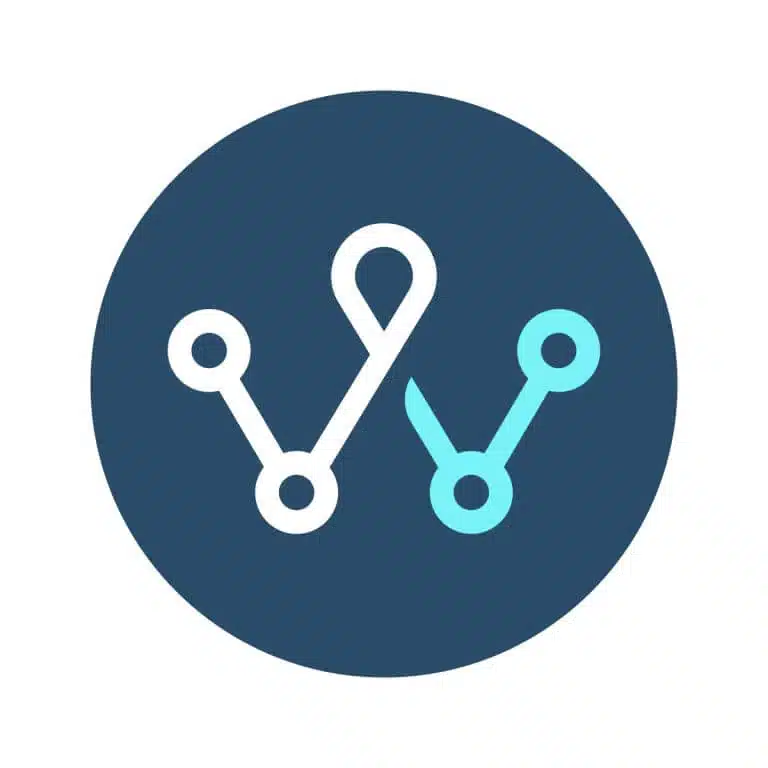In the digital world, “content is king,” as the saying goes. And in recent years, information technology has moved at speed to enable and support businesses that want to use content strategically to build their brands and grow their market share.
Today, a digital content management system is recognized by forward-looking organizations as a strategic arrow in their quiver. Just consider these figures: The worldwide market for content management systems (CMS) was valued at a staggering USD 47.29 billion in 2020 and is expected to reach USD 105.56 billion by 2026, growing at a CAGR of 25.7% over the period 2021–2026.
In this article, we’ll explore what content management systems are, what they do, and why they matter.
What Is a Content Management System (CMS)?
A content management system is a software tool that allows people to create, manage, and update content. The terms content management system and web content management system (WCM or WCMS) are often used interchangeably. We prefer CMS because in today’s world content is distributed across multiple channels and organizations need to be thinking about more than just the web.
One of the reasons for the popularity of CMS is that these tools are easy to use and don’t require a huge amount of technical know-how on the part of the user (such as knowledge of coding, for example.)
The CMS platform takes care of all “backend” technical and infrastructure-related matters, letting you get on with developing and optimizing the public-facing elements of your website, apps, social channels, etc.
These systems also allow you to quickly create, edit, publish, and store documents and images. The technology embedded in these platforms automates workflows (such as collaboration and approval processes) among internal stakeholders. They make version control a breeze, and there’s typically a wealth of pre-built digital content templates available to users.
User permissions can be specified according to user roles: some features can be made accessible to any user, while others may be restricted to administrators or webmasters.
Keen to learn more about content management systems for enterprise organizations? Read our full guide.
How Does a Content Management System Work?
Most CMS platforms comprise two core components: a content management application (CMA) and a content delivery application (CDA). These two applications work in concert behind the scenes to process all the technical elements (such as coding and database queries).
In building out your front end, you have access to an intuitive content editor to design your pages and add text, images, and customizations.
What Are the Different Types of Content Management Systems?
All CMS platforms aren’t created equal, and as with any burgeoning marketplace, vendors have started releasing solutions tailored for specific users and business types and requirements.
Here are the four main content management system categories available today:
Traditional/Coupled CMS
A traditional or coupled CMS is the most basic and best choice for businesses and users with relatively straightforward content requirements.
Decoupled CMS
This is a more sophisticated option, and, as its name suggests, the front-end and backend are separated. This option is ideal for organizations seeking more flexibility and versatility in their content development. It’s also inherently more secure.
Headless CMS
A headless content management system offers high levels of flexibility and extensibility. It also separates backend and front-end content functions; however, its API-first architecture allows users to quickly access and transfer data from the backend to the front end. Headless CMS platforms have traditionally been popular among organizations that publish large volumes of content across various digital channels, however the rise of the modular digital experience platform (DXP) has led to increasing adoption of headless architecture across all types of organizations.
Hybrid Headless CMS
A hybrid headless CMS offers users the benefits of both a headless CMS and a traditional coupled CMS. It’s quick and easy for users to create, publish, and manage personalized, responsive, and interactive content on multiple platforms. It’s a great option for organizations that place a premium on having high-quality, responsive, and brand-aligned content.
What Are the Main Functions of a CMS?
CMS platforms control the following aspects of content creation and delivery:
- Design and text editing
- Scheduling and publishing
- Versioning
- Indexing and metadata
- Document/image search and retrieval
12 Benefits of Using a Content Management System
Not all CMS platforms are the same. The nature and size of your business and the scope and objectives of your content strategy will inform what to look for when selecting a CMS software tool.
Here are some of the benefits you can look forward to with the right solution:
1. Ease of Use
For people to start using and loving your CMS, it needs to be easy to use. A non-intuitive solution will result in users wasting countless hours and create frustration all around. The good news is that most modern content management tools have been developed with user-friendliness in mind and don’t require advanced technical know-how. Another advantage is that you’ll need to invest less in hiring specialist coders and web developers.
2. Content Customization
Most CMS platforms have a host of customization options or “themes” for everything from design and layout to menu locations. With just a few clicks, you can also opt-in or out of different functionality or plugins (for example, security and spam, and sync options).
3. Team Collaboration
With a robust CMS, multiple users can collaborate on content from a single location. Everyone involved in content creation will have a specific role in the process, but CMS software makes the handoff and approval process seamless. For instance, your writers – who create initial pieces of content – can upload and share their drafts with your editor, who can, in turn, share the next iterations with the relevant stakeholder for approval. Meanwhile, your designers can start working on the supporting design elements and selecting and uploading images. Your marketing manager can check the final product for brand alignment before the content goes off to your publisher to take live.
4. Scheduling
Most organizations compile detailed editorial content calendars that govern what will be published, where, and when. CMS platforms allow you to simplify and centralize your content calendar and share it with all the relevant stakeholders. Everyone can see at a glance what’s coming up over the next days, weeks, and months.
5. Security
Any business with an online presence needs to be mindful of information security and vigilant about avoiding the possibility of a data breach or loss. The impact of a security incident can be grave and include reputational damage or steep fines. So, it makes sense to scrutinize the security features that your content management system vendor offers as part of their solution and be sure to switch on all optional security plugins once it’s installed.
6. Always-on Accessibility
Today, leading CMS tools are cloud-based, which means any authorized party can access them from any location, at any time. This is great if you’re a global organization with users working remotely and in different time zones. The best CMS tools are also mobile-friendly, which further adds to their accessibility and convenience.
7. SEO Integration
Anyone involved in digital content development appreciates the criticality of ensuring that content is SEO optimized to attract high traffic volumes, ultimately generating more solid leads. CMS platforms can take care of much of the time and effort involved in optimizing your website and published content so that it ranks well on popular search engines. For example, it’s quick and easy for your online marketing team to add your meta descriptions and meta tags, keywords, and URLs.
8. Analytics
Digital marketers know that demonstrating a return on the investment made in their initiatives and campaigns is imperative. Without showing solid performance, securing a future budget will be difficult. CMS platforms allow you to track the volume and quality of engagement with your content across several key metrics. In addition to integrating with analytics engines such as Google Analytics, most CMS platforms have their own reporting functionality, eliminating the need to invest in additional tools to access these insights.
9. Instant Updates
Given the pace of modern business and our “always-on” digital lifestyles, content gets stale pretty quickly. Modern marketers know that regularly retiring or updating content that no longer holds much relevance is a sound strategy. What’s more, when there’s breaking news on a topic relevant to your industry, marketplace, or customers, you want to react – fast. CMS platforms allow you to be responsive and agile to shifting trends and publish timely content through the right channels without the barrier of long lead times.
10. Distribution Across Multiple Channels
Because people consume content on a host of different platforms and channels, its imperative to publish your content so you “meet people where they are” to maximize your reach. CMS tools let you do just that, facilitating tailored content campaigns for each of your chosen channels (for example, on your website, through email or text blasts, or on social media). This allows you to provide the right content to the right person at the right time through the right channel.
11. Post-sale Support
When evaluating potential CMS vendors, be sure to understand their post-sale support process. If you run into a technical snag a few hours before the launch of an important campaign, the last thing you want is to struggle to secure immediate technical support. Look for vendors that offer support teams that are available and responsive 24/7.
12. Affordability
As we mentioned earlier, most CMS platforms are user-friendly to the extent that people with little or no technical knowledge can learn to use them easily. That allows you to invest less of your headcount budget in specialist web design or development resources. Of course, depending on the makeup of your marketing function, these skills may still have a place in your organization, but you won’t need to call on them to perform simple tasks like making minor changes to your web pages.
Wrapping Up
Regardless of which channels you choose or who your customers are, beautifully designed, relevant content can do more than broadcast your message to the digital universe. With great content, you have a wonderful opportunity to develop your brand’s unique voice and communicate its distinctive personality. You can create the right impression and increase your visibility in a crowded marketplace.
How WayPath Can Help
WayPath has years of experience helping businesses of all sizes and industries get the most of their investment in content management systems and software.
We strategize, design, and customize world-class content management system software that gives organizations full control over their content life cycle from planning and creation to delivery and analytics. Our team of software consultants, architects, developers, and project managers have extensive experience working on customer communication, customer relationship, and content management platforms.
With CMS firmly at the heart of their marketing communications, our clients can effortlessly create, review, modify and publish fresh digital content – all with a simple interface that easily adapts to their needs and the needs of their audience.
If you’re interested in learning more about WayPath and how we can accelerate your CMS ambitions, read more about our CMS expertise here.
Intrigued, but not ready to meet? Contact us, and we’ll share more information.




